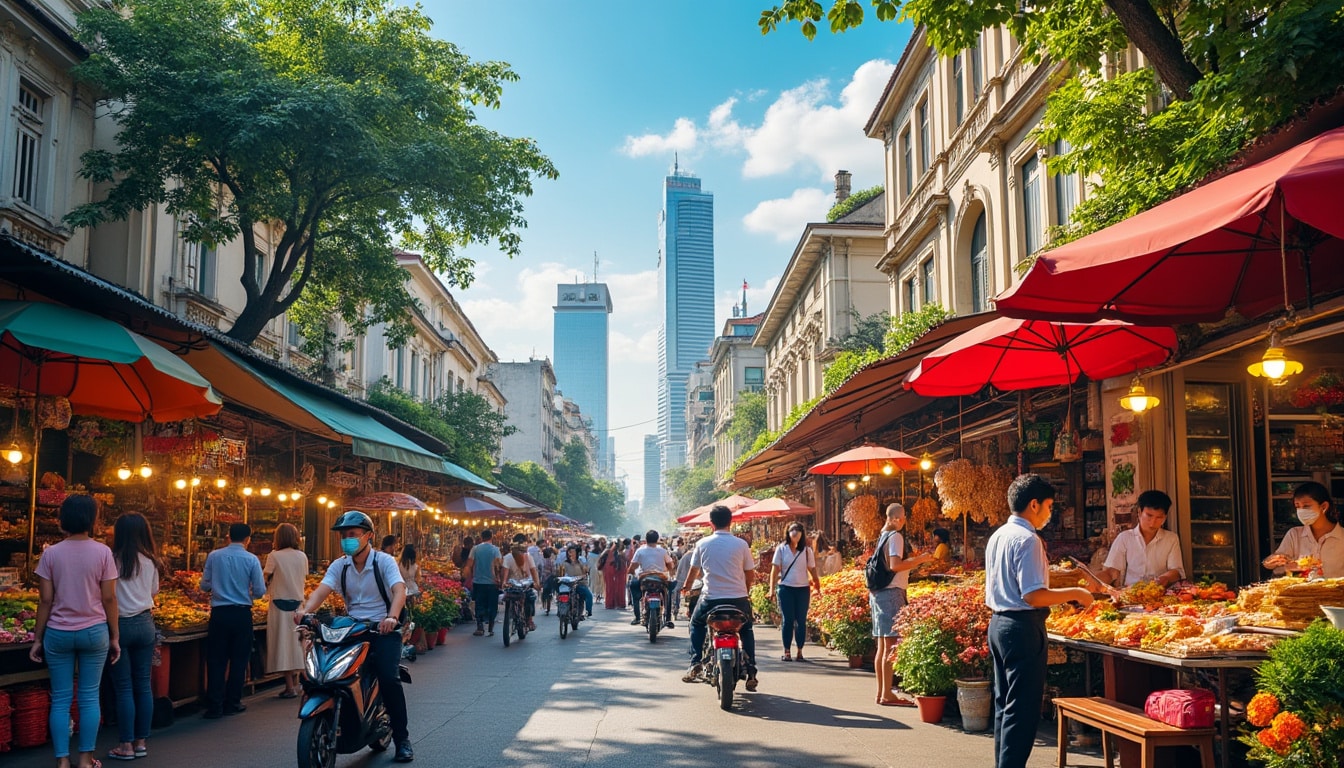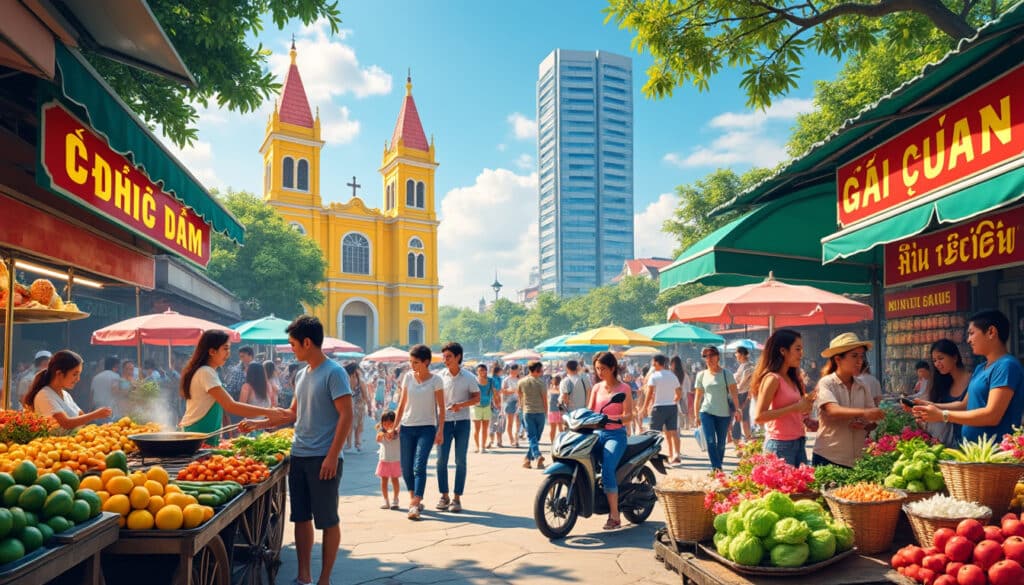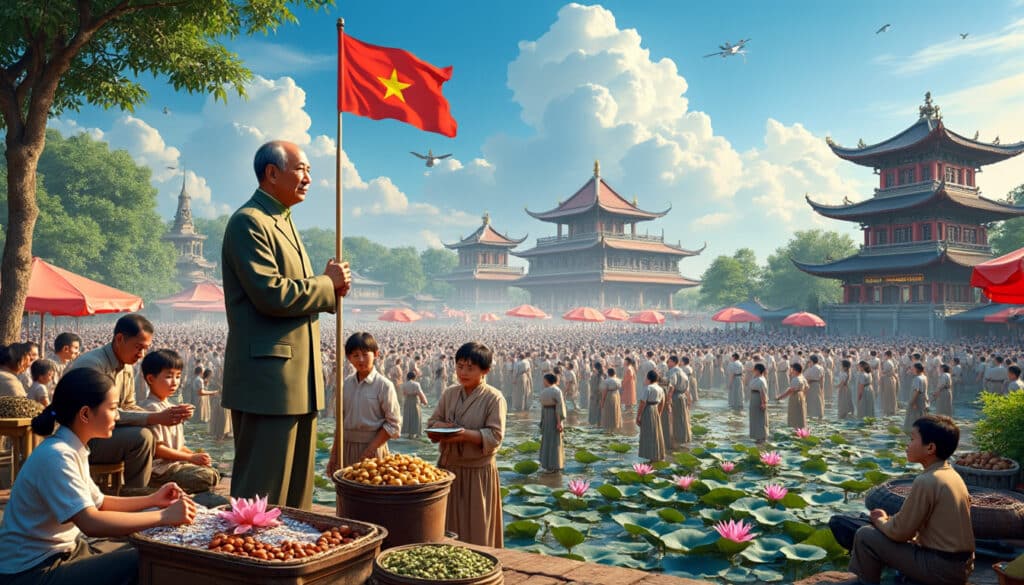In the bustling streets of Ho Chi Minh City, language serves as both a bridge and a barrier. The city’s unique linguistic landscape, a product of its rich history and rapid modernization, reflects the dynamic interplay between tradition and change. Understanding the language and spelling conventions prevalent in Ho Chi Minh is essential for anyone wanting to fully immerse in Vietnamese culture, whether through travel or long-term residence. This exploration delves into the multifaceted aspects of language, providing insights for students, travelers, and linguists alike.
The Influence of Ho Chi Minh’s Linguistic Heritage
The history of Ho Chi Minh City, formerly known as Saigon, is steeped in a blend of colonial influences and local traditions. This historical tapestry is mirrored in its language. Ho Chi Minh itself is not just a name but a symbol of an era, a testament to Vietnam’s fight for independence. The Vietnamese Language Institute has extensively documented the evolution of this name, from Nguyễn Sinh Cung to Nguyễn Ái Quốc, and finally to Hồ Chí Minh, which means “Hồ with the will of light.” Each of these names carries significant cultural and political weight, reflecting different stages of Vietnam’s tumultuous history.
Linguistically, Vietnamese is a tonal language, which means the pitch or intonation can change the meaning of a word. This tonal aspect, coupled with its unique script developed over centuries, presents both challenges and opportunities for learners. Institutions such as the Ho Chi Minh Language Center offer courses that help bridge these linguistic gaps, providing both historical context and practical language instruction.
The orthography of Vietnamese has seen significant transformations over the years. The adoption of the romanized Quốc Ngữ script, promoted during the French colonial period, replaced traditional Sino-Vietnamese characters. This shift not only democratized literacy but also aligned Vietnam more closely with Western educational paradigms. This script is now universally used across Vietnam and is fundamental in educational institutions like Ho Chi Minh Educational Tours, which offer interactive learning experiences centered on Vietnam’s linguistic and cultural heritage.
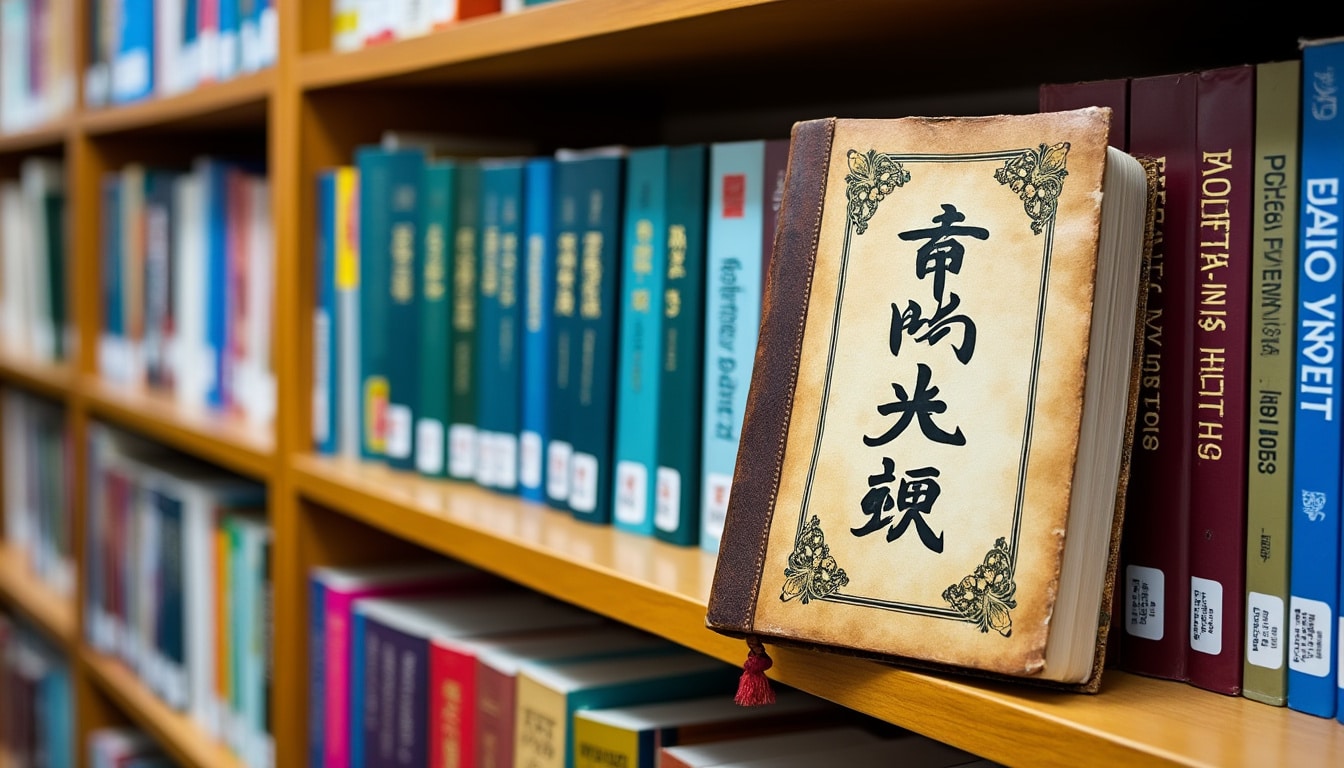
The Role of Language in Cultural Exchange
The role of language in cultural exchange cannot be understated. Programs designed for Cultural Exchange Programs are thriving in Ho Chi Minh City, leveraging the city’s strategic position as a cultural and economic hub. These programs highlight how language learning can foster deeper cultural understanding and collaboration. Vietnamese Language Apps, available on both iOS and Android platforms, have become indispensable tools for tourists and expatriates navigating daily life in the city. Learning basic phrases or understanding signage can enhance experiences at local restaurants or markets, described vividly in resources like those found on Vietnam Travel Books and guides.
Moreover, language serves as an entry point for understanding local customs and traditions. For example, understanding the nuances of Vietnamese meal times—covered extensively in resources like the Saigon Scripts—provides insights into the social fabric of the country. The importance of meals as a time for family gathering and social interaction is a cultural cornerstone that shapes everyday Vietnamese life.
Modernizing Vietnamese Spelling
In today’s digital age, the spelling and usage of Vietnamese are evolving swiftly. With the proliferation of smartphones and online communication, a new, informal version of Vietnamese has emerged, often referred to as “teen code” or “chat language.” This modern twist on the language sees traditional spellings altered for brevity and speed—a development that has garnered both criticism and intrigue among linguists and educators at the Vietnamese Tutor Services.
This linguistic phenomenon is akin to text slang in English, where phrases are shortened or phonetic scripts replace longer words. For instance, “ik” might be used in place of the full spelling “đi,” meaning “go.” Such changes, while facilitating faster digital communication, can be confusing for those learning the language or transitioning from formal education settings. Yet, it’s also a testament to the language’s adaptability and the resilience of Ho Chi Minh’s vibrant youth culture.
The Ho Chi Minh Language Resources have responded to these changes by incorporating lessons on digital Vietnamese into their curriculum. This not only educates learners on contemporary usage but also preserves traditional forms of the language. Embracing this dual approach ensures that both types of communication are valued and understood.
Navigating Language Learning as an Expat
For expatriates, navigating language learning in Ho Chi Minh City often begins with understanding basic conversational Vietnamese. The city offers numerous Language Learning Hubs that provide tailored courses suited for different linguistic backgrounds and proficiency levels. These centers, found throughout the city, offer a variety of programs—ranging from intensive short courses to leisurely paced year-long studies.
In addition to structured courses, many expats turn to casual conversation clubs or language exchange meetups, which provide practical speaking experience and cultural immersion. This method is often enriched with cultural tours or weekend getaways, aligning with the offerings of many Vietnam Travel Books, which often come complemented with language tips for adventurous travelers.
One unique feature of Ho Chi Minh City’s language scene is the abundance of resources tailored towards practical daily interactions. Key phrases and vocabulary related to shopping, dining, and even bargaining are highlighted in many learning materials, ensuring that learners are equipped to handle real-world situations.
The Intersection of Language and Education in Ho Chi Minh
The intersection of language and education in Ho Chi Minh City demonstrates the city’s commitment to linguistic preservation and modern innovation. Schools and higher education institutions incorporate not only traditional classroom learning but also extracurricular activities that engage students with the cultural heritage of Vietnam. These activities might include visiting historical sites, participating in cultural festivals, or even internships with local businesses.
Such initiatives are part of broader educational tours promoted by the Ho Chi Minh Educational Tours, which aim to provide students with a comprehensive understanding of Vietnam’s history and its socio-economic landscape. The tours often include interactions with local communities and participation in workshops that focus on the art of Vietnamese calligraphy and traditional storytelling, which are vital components of the country’s oral history tradition.
Preserving Traditional Dialects
While modern Vietnamese predominates in urban areas, efforts to preserve traditional dialects are ongoing. Organizations often collaborate with local authorities to document and stimulate interest in regional dialects that are at risk of becoming obsolete. Workshops facilitated by the Vietnamese Language Institute frequently attract language enthusiasts eager to learn about the subtle differences in dialectal pronunciation and vocabulary across Vietnam.
These endeavors not only fortify a sense of identity among residents but also enrich the cultural experience for visitors. Understanding these linguistic nuances can deepen the appreciation of Vietnam’s diverse heritage, creating a more inclusive society for both residents and expatriates alike.
Essential Vietnamese Language Tips for Travelers
Whether you’re a first-time visitor or a seasoned explorer, mastering a few essential Vietnamese language tips can transform your experience in Ho Chi Minh City. For travelers, a basic understanding of common phrases can significantly enhance interactions with locals and enrich your immersion into the vibrant culture of Vietnam. Consider the following pointers:
- 👍 Learn key greetings and polite expressions—saying “Xin chào” (hello) and “Cảm ơn” (thank you) can go a long way.
- 🛍️ Familiarize yourself with numbers and currency terms to make shopping easier, especially in local markets.
- 🍜 Understand food-related vocabulary, as described on travel resources, enhancing your culinary adventures in Ho Chi Minh City.
- 📕 Leverage Vietnam Travel Books and mobile apps for quick reference.
- 🌏 Participate in local cultural events and language workshops for immersive learning experiences.
These foundational skills help create meaningful connections and ensure a more personalized journey through this captivating city.
Using Technology to Master Vietnamese
Incorporating technology into language learning is increasingly popular, especially among young travelers. Leveraging mobile apps and online resources allows real-time access to a vast array of Vietnamese Tutor Services and language materials. Many apps offer interactive features such as pronunciation guides, quizzes, and even real-time translation, making them indispensable tools for travelers seeking fluency and understanding.
One of the invaluable perks of using these technological resources is the ability to connect with native speakers through exchange platforms and social media, like those annotated in guides on daily life in Ho Chi Minh. Such interactions allow learners to practice conversation in a natural setting and receive feedback on their pronunciation and grammar use, fostering a more authentic learning experience.
FAQ: Navigating Language in Ho Chi Minh City
Here are some frequently asked questions about learning and using Vietnamese in Ho Chi Minh City:
- Q: What is the best way to start learning Vietnamese?
- A: Begin with an introductory course at a local language center, and complement your studies with language apps.
- Q: Are there dialect differences within Ho Chi Minh City?
- A: While the city primarily uses Southern Vietnamese, you may encounter variations from other regions as it is a melting pot of cultures.
- Q: Can technology help in learning Vietnamese?
- A: Absolutely! Many apps offer excellent tools for practice and interaction with native speakers, enhancing your learning journey.
Mastering the language and understanding the cultural nuances of Ho Chi Minh City can significantly enrich your visit or stay. Equipped with the right resources and a keen interest, you’ll be well-prepared to navigate the city’s linguistic landscape with confidence. 🌟
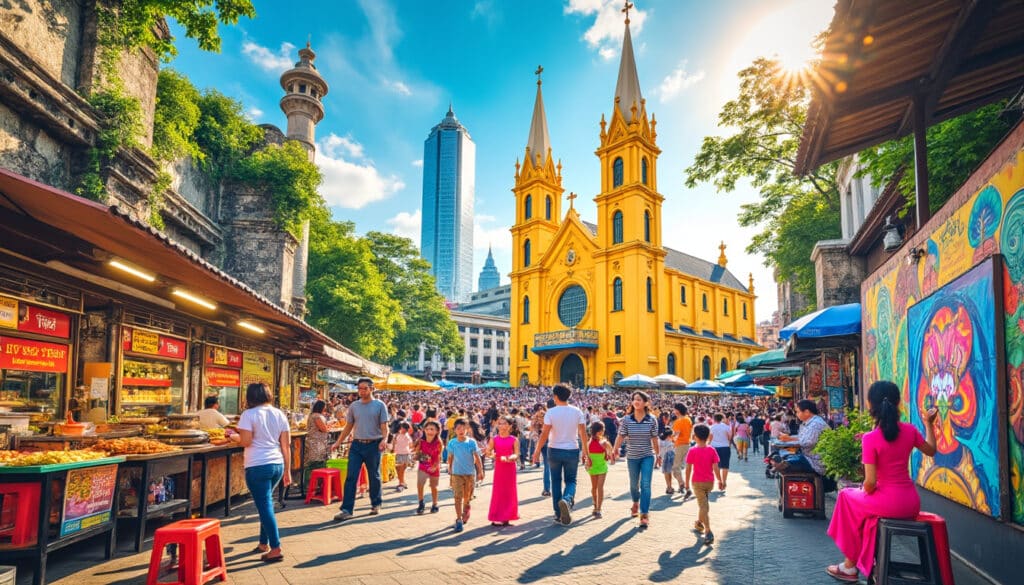
Fun Facts & Curiosities About Ho Chi Minh
Ho Chi Minh City, also known by its former name Saigon, is not just a bustling modern metropolis but a city filled with curious contrasts and intriguing historical narratives. From its storied past as the capital of South Vietnam to…
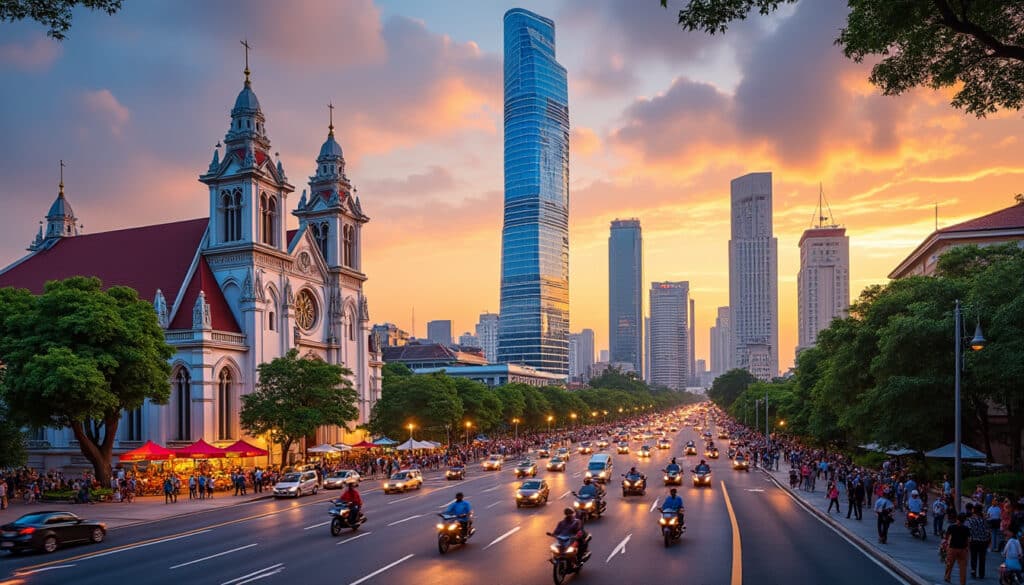
Architecture and urban features of Ho Chi Minh
Ho Chi Minh City, the bustling economic heart of Vietnam, is a captivating blend of the old and the new, a testament to its ever-evolving architectural landscape. From its historical roots as Saigon, with traditional Vietnamese and French colonial influences,…
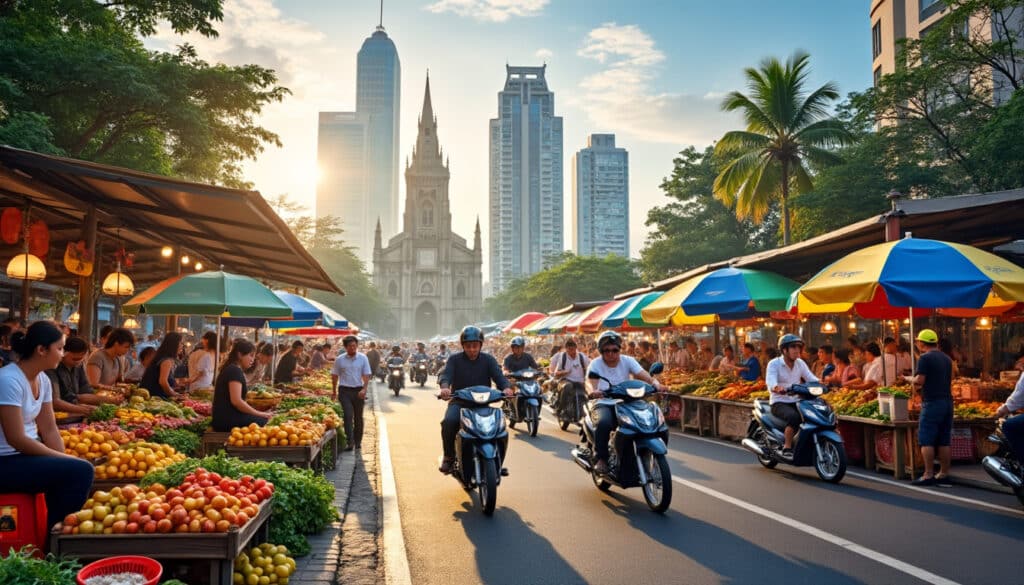
Ho Chi Minh City, once known as Saigon, is a vibrant and bustling metropolis that captures the essence of a city constantly on the move. Life here hums with an eclectic mix of tradition and modernity, where the past and…

Demographics and geography of Ho Chi Minh
Ho Chi Minh City, formerly known as Saigon, stands as a vibrant testament to Vietnam’s blend of tradition and modernity. Nestled between the fertile lands of the Mekong Delta and the bustling southeast, it pulsates with life and energy. As…
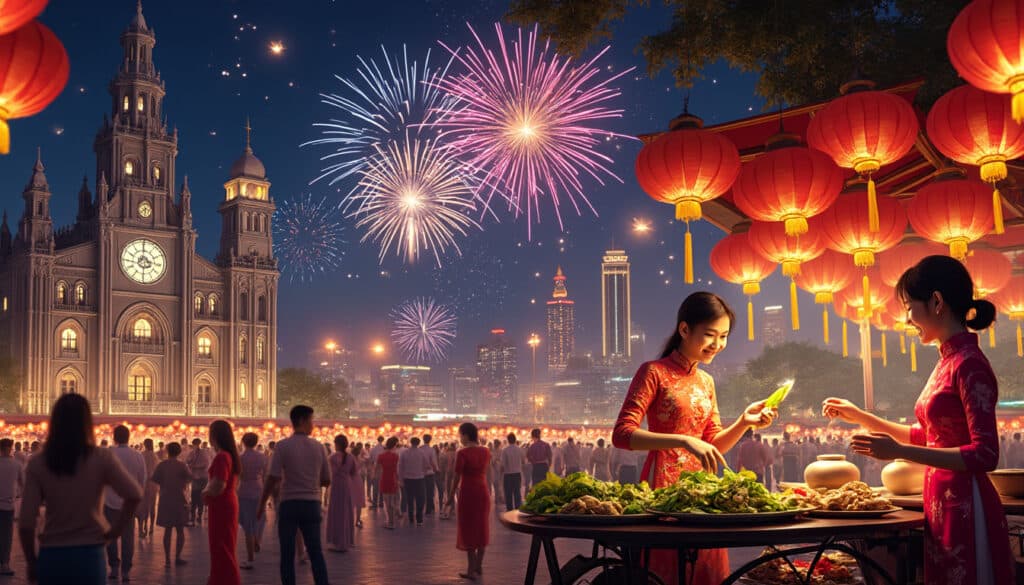
Holidays and celebrations in Ho Chi Minh
Ho Chi Minh City, with its rich tapestry of cultural influences and historical significance, stands as a beacon of celebration in Vietnam. Here, traditions old and new intermingle, creating a vibrant landscape of festivities. From the pulsating energy of the…
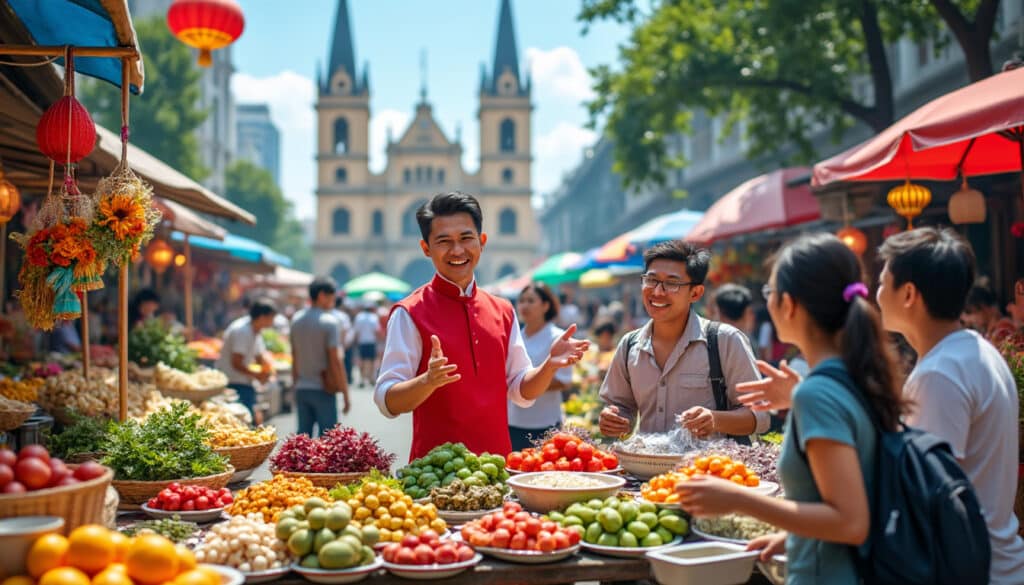
Local tips for tourists in Ho Chi Minh
Ho Chi Minh City, a bustling metropolis teeming with energy, is a gem in Southeast Asia that offers an intoxicating blend of history, culture, and modernity. From its vibrant street markets and delicious street food to its historical sites and…
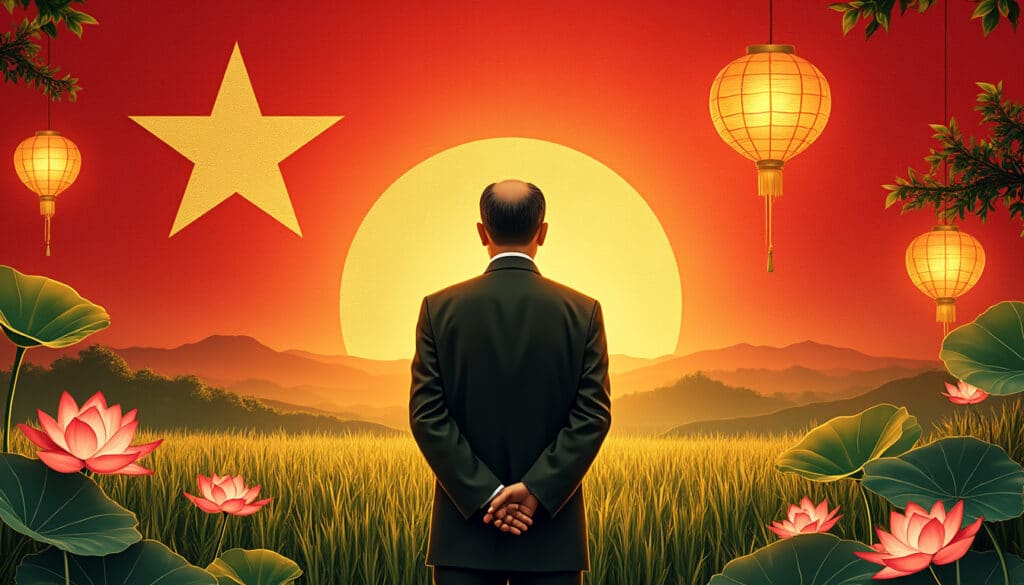
Names, flags, and identity of Ho Chi Minh
The legacy of Ho Chi Minh is deeply interwoven with the identity and history of Vietnam. Known by many names and represented by various flags throughout his life, Ho Chi Minh remains an iconic figure whose influence extends beyond Vietnam.…
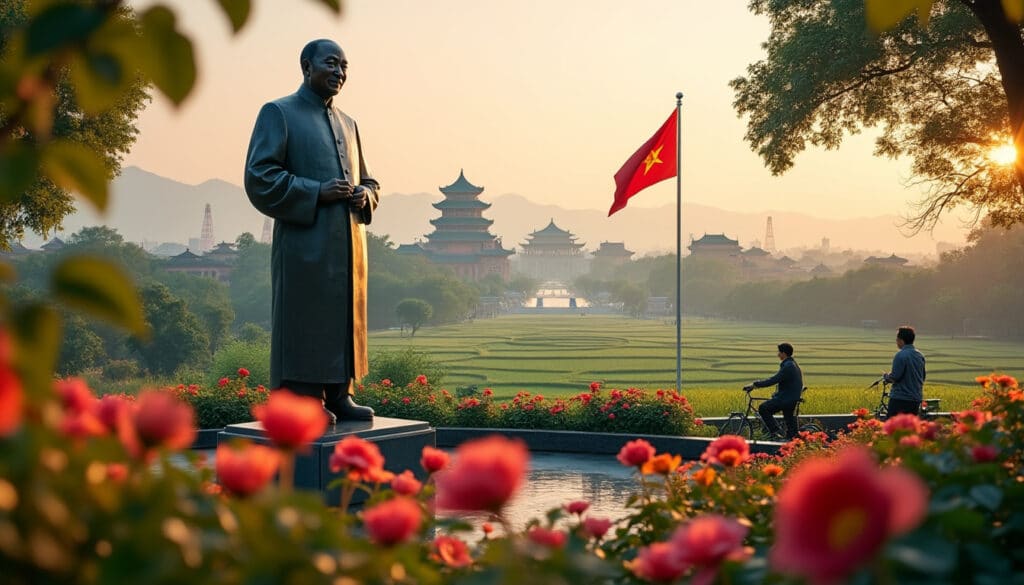
Reputation and identity of Ho Chi Minh
In the heart of Vietnam, the legendary figure of Ho Chi Minh continues to captivate minds, dominating discussions related to national identity and the nation’s storied past. An icon of resilience and strategic acumen, his image is immortalized in everything—from…
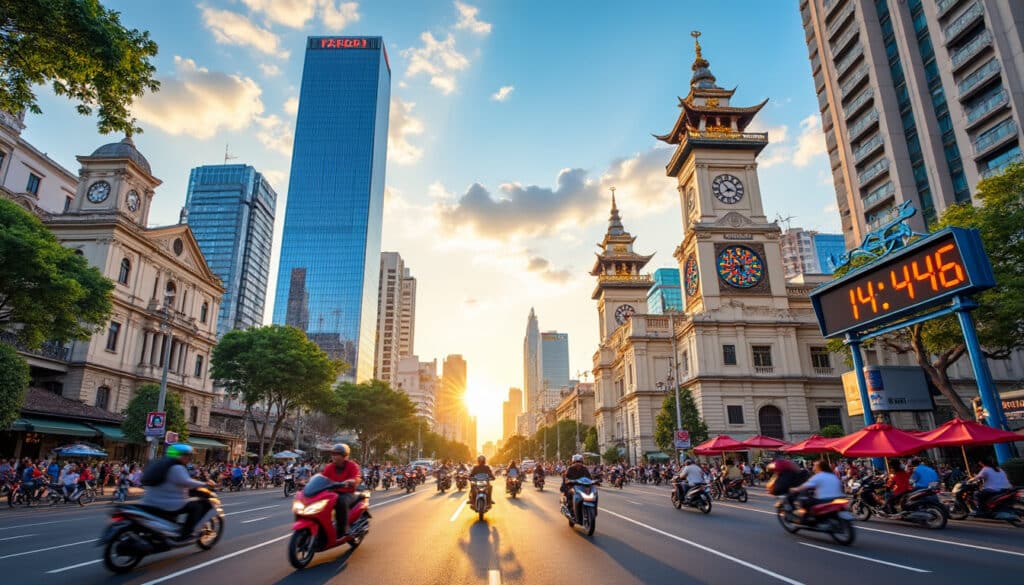
Time and time zone in Ho Chi Minh
Ho Chi Minh City, a bustling metropolis in Vietnam, is a city that never sleeps, where the hum of scooters is the soundtrack to daily life and the aroma of strong coffee permeates the air. It’s a place where time…
Unusual facts and social issues in Ho Chi Minh
Ho Chi Minh City, often referred to as Saigon, is a vibrant metropolis teeming with history, culture, and an array of fascinating quirks. Despite its rapid modernization, the city retains an intricate blend of past and present, where unique facts…
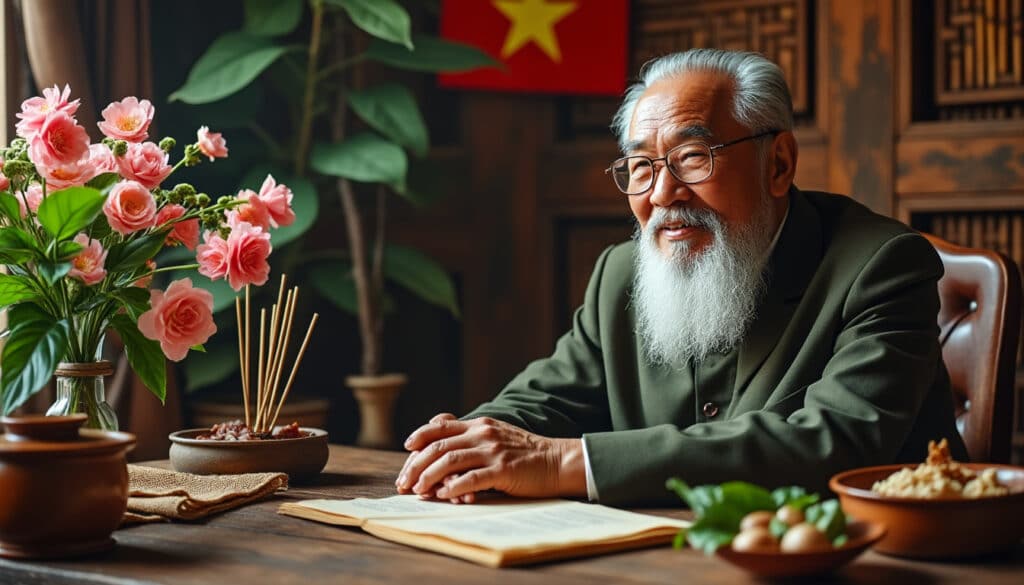
What does Ho Chi Minh look, smell, feel like?
Ho Chi Minh City, often referred to as Saigon, is a bustling metropolis in southern Vietnam that offers an unparalleled sensory experience. From the sleek skyline that reflects its modern aspirations to the fragrant aromas that fill the vibrant streets,…

